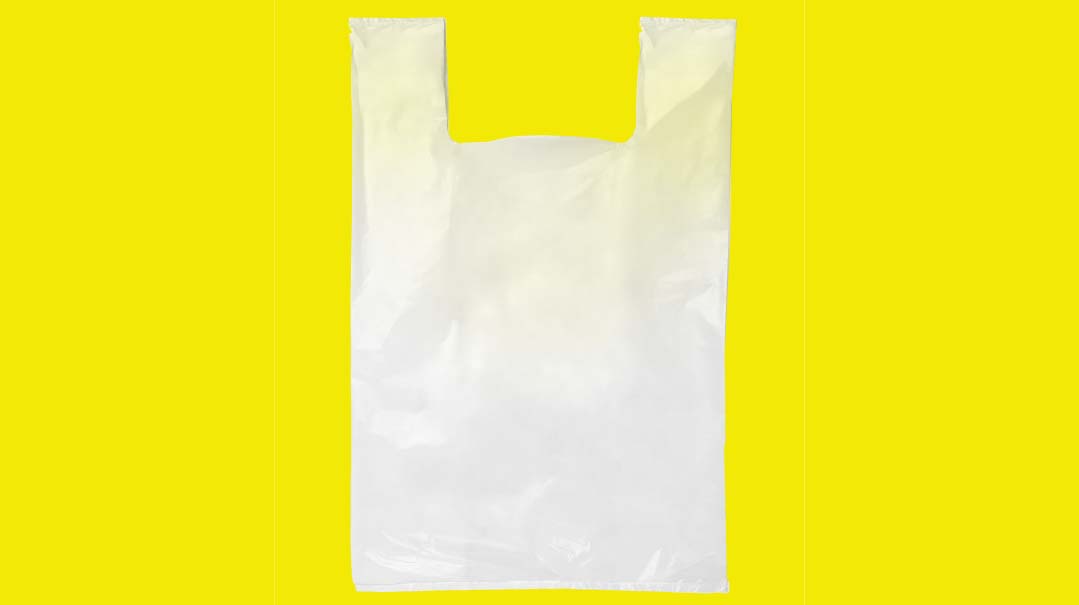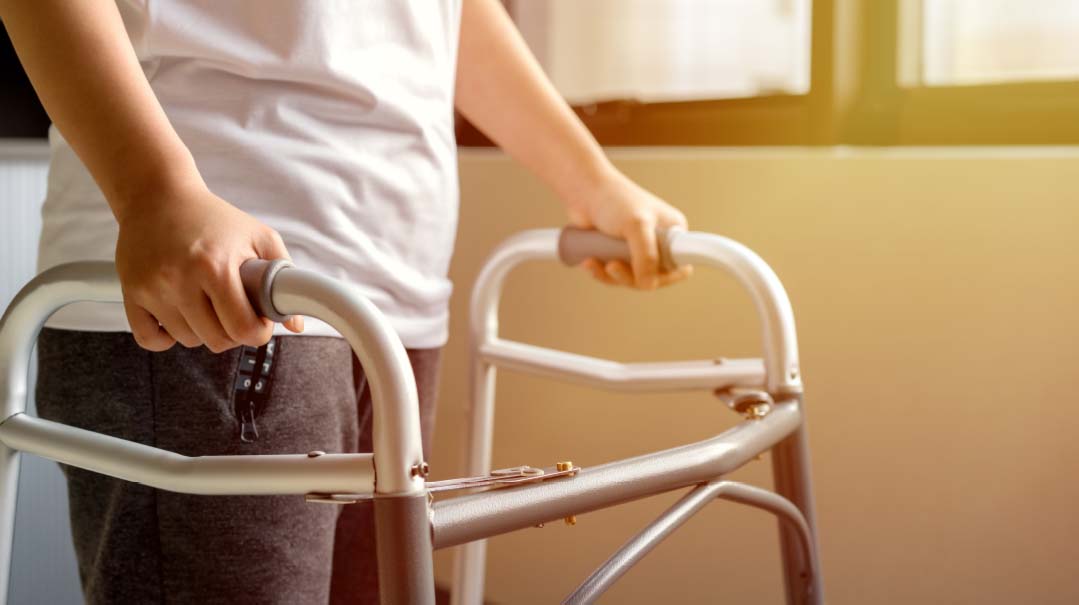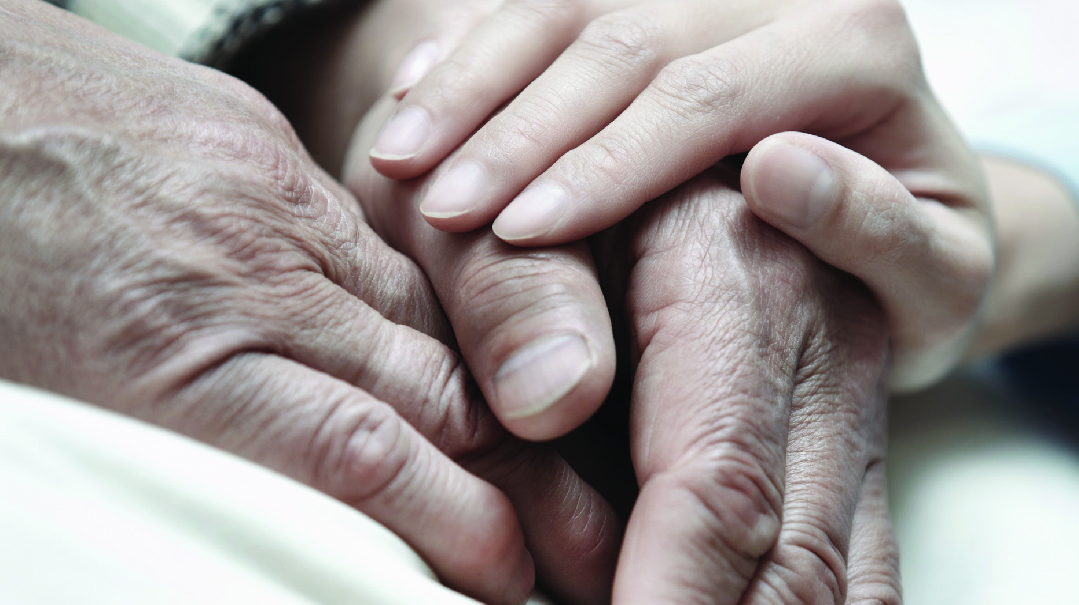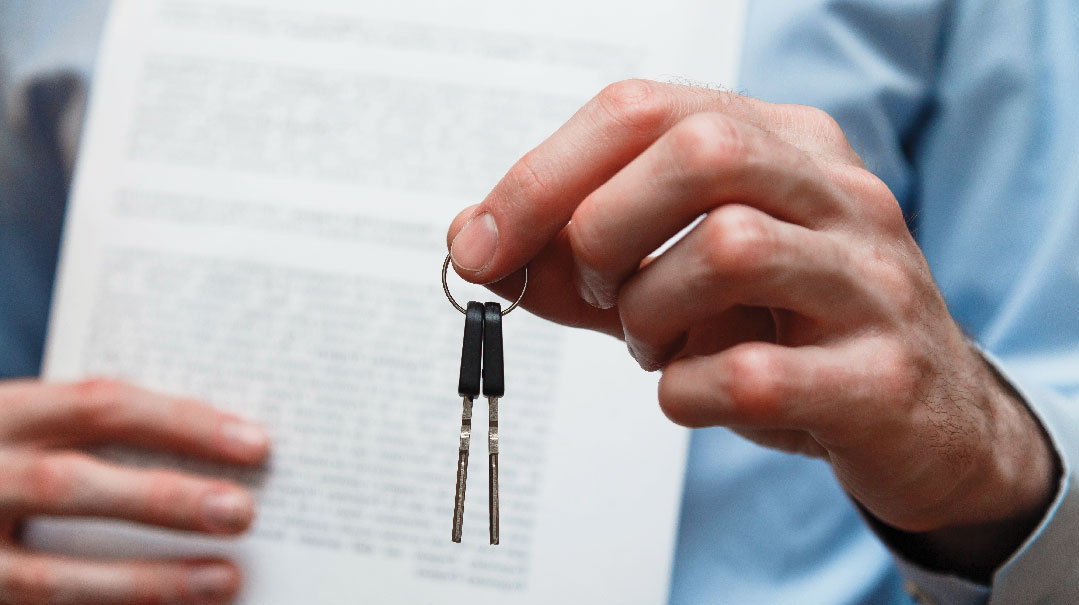The True Giver

Fighting for our baby’s every breath, we gained just as much as we gave
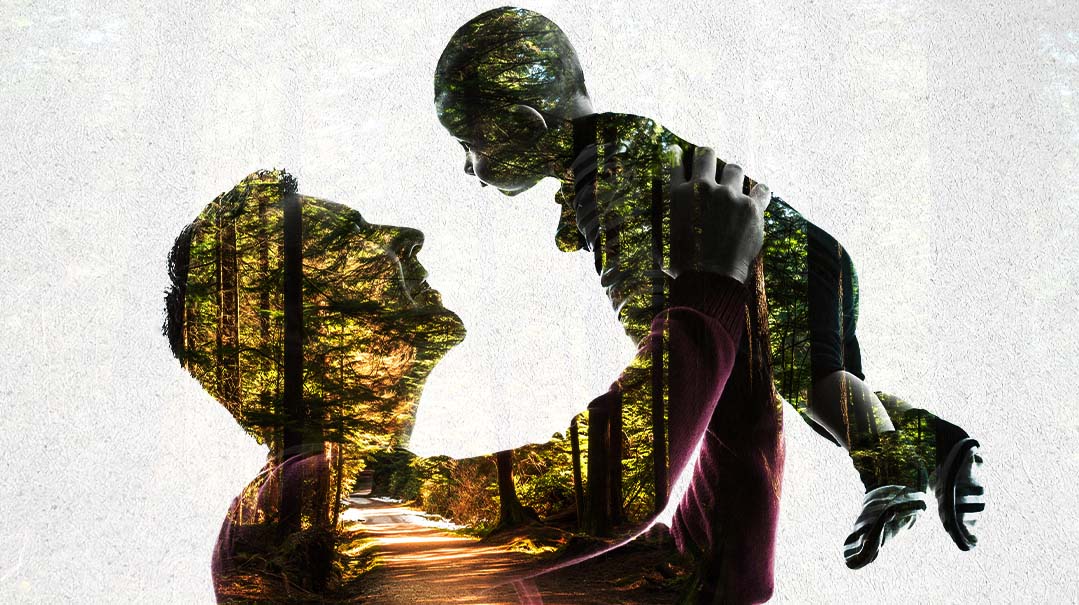
One Friday night, several days before our third child was due to be born, my wife, Leah, told me that she wasn’t feeling the baby’s movements.
We rushed to the hospital, but the medical staff did not seem overly concerned.
“The baby is moving,” one nurse assured Leah. “You just don’t feel it.”
But when they did an ultrasound, they could not detect any movement, and they immediately performed an emergency C-section.
That our daughter was born alive was already a miracle. But having suffered oxygen deprivation, she could not breathe on her own, and she was not moving at all. The doctors quickly intubated her and whisked her to the NICU. Thankfully, it was Shabbos, so Leah and I had time to digest the situation a bit before we had to inform anyone of our daughter’s birth — and her prognosis.
Hashem did us a tremendous chesed by breaking the news of our baby’s condition to us gradually. Right after her birth, we were warned that she might have suffered brain damage, but the extent did not become clear until 72 hours later, when an MRI showed that she had indeed suffered permanent brain damage.
At the time, the doctors told us that our daughter, whom we named Adina, would have a harder time than most kids reaching developmental milestones, but we naively assumed this meant that we’d have to be more patient with her when she was learning to ride a two-wheeler. We didn’t realize that “milestones” included basics like moving a hand, making eye contact, or eating solid food.
With time, we would learn that Adina suffered from cerebral palsy. And impaired vision. And hearing loss. But for now, we were overcome with gratitude that our baby had survived.
While Adina was in the NICU, a neurologist mentioned to me that a clinical trial in stem cell therapy for brain-damaged babies was being held in North Carolina. I made inquiries to see whether Adina was a candidate for the trial, but was told that we would need to supply cord blood from either her or a sibling. We did not have that, so we did not qualify.
After two weeks, Adina was successfully extubated, and two weeks later she was released from the hospital. She had a hard time eating, and she needed to be held and snuggled a lot, but other than that, caring for her was not that different from caring for any other newborn.
When Adina was two months old, she began receiving early intervention services, in the form of physical therapy, occupational therapy, speech therapy, and developmental therapy. Practically every waking hour of hers was devoted to therapy — if not with a professional, then with her mother. Knowing that the brain is amazingly adaptable, especially in infancy, Leah worked with Adina tirelessly to help her create new neural pathways to bypass the damaged brain cells. When therapists worked with Adina, Leah would ask them to show her what they were doing, and she followed up by practicing those exercises with Adina again and again. Raise Adina’s hand. Close her hand. Wave a shiny toy in front of her to help her focus.
At first, Leah and I didn’t understand why the doctors kept fussing about Adina’s eyes. True, she was a bit cross-eyed, but aren’t all newborns cross-eyed? When she was about two months old, we took her to a leading eye specialist, hoping that he would be able to recommend possible treatments.
“Glasses won’t work,” he declared. “Prisms won’t work. The only thing you can do is come back in six months, and then I’ll tell you how bad her cerebral visual impairment is.”
This pessimistic prognosis was like a dagger in our hearts. Our goal was to help our daughter, not to hear exactly how severe her diagnosis was.
Determined to help Adina reach her full potential, we traveled to Chicago to see a specialist who fitted her with special prism glasses that help train the brain to “see” by interpreting the incoming signals from the eye. And we actually saw a huge improvement: At first, Adina would not even blink if we waved our fingers in front of her eyes, but with time she learned to focus and identify the objects before her.
With her glasses, Adina began to look like she had special needs, a look that was exacerbated shortly afterwards, when she was fitted with hearing aids. At this point, the reality sank in: We really do have a child with special needs.
Leah was busy with Adina round-the-clock, in addition to caring for our older two children and running the house. I tried to pitch in, by tackling the mountains of paperwork that Adina’s care entailed and dealing with insurance and other logistical issues. I would also drive Adina to numerous medical appointments — the eye doctor, the ear doctor, the neurologist, this hospital, that hospital — most of which were a considerable distance from our home.
Living as we were in a blur of nonstop appointments and therapies, I decided that we needed chizuk. All along, I had been turning to my rav, Rav Levinberg, with technical sh’eilos, but now, six months after Adina’s birth, I asked Leah to come with me to speak to the rav and his rebbetzin on a more personal level.
When we sat down with the rav, I cried for the first time since Adina’s birth.
“Adina is very cute,” I began, “but caring for her is incredibly challenging, and the entire family is suffering.”
“Hashem knows what He is doing,” Rav Levinberg told us gently. “He has a plan, and He loves us.”
Just seeing how deeply he felt our pain lifted much of the burden off our shoulders. He discussed with us the Torah hashkafah on challenges in general, and the challenge of a child with special needs specifically, and then the rebbetzin gave us some practical guidance.
“Just remember that you’re doing chesed every moment that you’re caring for Adina,” she rebbetzin told us. “Think chesed, chesed, chesed.”
“But how are we going to marry her off?” I asked tearfully.
“That’s not your focus,” she replied. “Mashiach will hopefully come before that’s an issue. Your focus now should be to make it through the day.”
Turning to Leah, she said, “You need to start taking help. It won’t make a difference if someone else is doing the therapy work with Adina. A child with special needs is not only her parents’ responsibility — you need to share the load with others.”
“I don’t know,” Leah said hesitantly. “I’m not used to taking help.”
“Sometimes we need to learn to be takers, not only givers,” the rebbetzin answered.
The rebbetzin then asked Leah if she ever got out to do something for herself, and when she said no, the rebbetzin told her, “You have to start getting out and being a person. And you also have to bring Hashem into your life every day, not just once in a while.”
Finally, the rebbetzin told Leah, “Your shalom bayis has to be your top priority. Otherwise, nothing else is going to work.”
The rebbetzin arranged for teenage girls to come to our house twice a week to help with the kids and the housework. We also began to hire girls to work with Adina and do the exercises her therapists recommended.
From then on, Leah and I made a point of going for walks at least twice a week and talking out whatever difficulties we were experiencing. We also began learning together, studying Shaar Habitachon in the Chovos Halevavos as well as other seforim, and working to incorporate bitachon into every aspect of our lives.
As Adina grew older, she demanded more and more attention, and any time she was not being held or played with, she would cry. Unable to process visual input properly, her brain would quickly get overwhelmed, and she needed someone to comfort and distract her — all the time. At night, she could not soothe herself, and in order for her to sleep, she needed to have music playing beside her crib, even on Shabbos and Yom Tov.
Adina did not develop the muscle strength to hold her upper body up, and unless someone or something was supporting her back, she would fall forward, often banging her head in the process. To help strengthen those muscles, Leah would hold Adina’s arms out, loosen her grip on her back, and show her how to catch herself by her arms. She must have done this with Adina hundreds of times, over many months, hoping that the repetition would forge a new neural pathway that would enable Adina to do it herself. But by the age of 18 months, she was still flopping forward. If I held her on my hip, I would have to wrap my arm around her upper back to support her.
One day, Adina’s physical therapist threw up her hands and told Leah, “There’s no point in continuing to work with your daughter until she’s able to hold herself up. That’s a basic skill.”
Her advice? “Take a break for a week or two and just play with her. Give her tons of love and attention — and no therapy.”
We also asked our relatives to daven extra tefillos for Adina, so she could progress past this logjam. Lo and behold, within two weeks she started reaching forward with her arms to stop herself from falling. Soon, she was able to hold her upper body upright, which was a huge breakthrough.
When Adina was about two, I convinced Leah that we should enroll her in a day care for children with special needs. At first, Leah was apprehensive about sending Adina out, but seeing how happy she was when she came home each day reassured Leah that it was the right move.
About a year ago, Leah’s sister got married in Toronto, and volunteers from an organization that provides respite care for children with special needs offered to take Adina for several days so we could attend the wedding and Shabbos sheva brachos. Leah was again nervous to part from Adina, but then she consulted with Rebbetzin Levinberg, who said, “Of course you should send her! Have some nice family time with your other kids.”
Adina had a marvelous time and was glowing when we came to get her.
A few days before Pesach of last year, Leah gave birth to twins, and again, this respite-care organization took Adina, this time for the entire week of Pesach.
People would wonder how we were managing with twins — “Twins are so hard,” everyone said — but compared to Adina, the two babies were a cinch. With them, each stage zoomed by so quickly that we barely felt it. At first they were waking up every few hours to eat, and practically overnight, it seemed, they were already gobbling solids. They zipped through milestone after milestone — rolling over, picking up toys, pulling themselves forward — effortlessly achieving what had taken Adina months to conquer. For her, even something as simple as lifting a Cheerio from the high-chair tray was a huge achievement, one that required hundreds, perhaps even thousands, of practice repetitions. The twins needed to be held and soothed a lot the first few months, but they were a lot lighter and easier to occupy than three-year-old Adina, who could not walk or speak and refused to be left alone on the floor for more than a few minutes.
“We don’t have twins,” Leah observed. “We have triplets. More like quintuplets.”
Seeing how Leah was struggling to juggle everything, and how delighted Adina was with the attention and stimulation she received from doting volunteers, I thought it would be a good idea to send Adina to Camp HASC this past summer. But when I made inquiries, I discovered that enrollment of new campers is very limited, and also that Camp HASC generally does not accept kids that young; Adina was only three. But for some reason, they agreed to accept her.
With Adina in camp, we were able to focus on caring for the twins and spending time with our two older children. We sent her to camp with no small measure of trepidation, but she had a fantastic time there, as she was showered with love and received tons of encouragement for every little thing she managed to do. By the time she returned seven weeks later, her development had taken a giant leap forward.
Until then, she had cooperated with Leah and the therapists reluctantly, reaching for a toy or rolling over because they insisted, and doing motions such as “open, shut them” mechanically. But when she came home from HASC, she was excited to show off her tricks, and showed newfound eagerness to connect and communicate with the people around her, even though she still could not speak.
When camp was over, we enrolled Adina in a special-needs preschool, where she continued to thrive, winning over the hearts of the staff members there with her winning smile and delightful personality.
About a week after this past Succos, I spoke to a representative of the stem cell trial in North Carolina. When the twins were born, we had saved their cord blood, and now I was arranging for swabbed samples to be mailed to the lab in North Carolina for analysis, to see if either of the babies was a close enough genetic match to Adina for her to receive stem cell therapy using their cord blood.
This was the first hishtadlus I had worked on for Adina, back when she was in the NICU — and it would also be the last. The following night, we found her lying unresponsive in her bed. Hatzalah raced to our house, but there was nothing they could do.
Hashem had given, Hashem had taken.
At the levayah, I quoted Rav Avigdor Miller’s response to a questioner who asked how parents of a brain-damaged child should view this challenge. He answered that seeing a brain-damaged child should spur people with healthy children to feel gratitude to Hashem, while the parents of this child have been granted a unique opportunity for chesed. This perspective, which echoed the perspective that Rav Levinberg and his rebbetzin had conveyed to us, had given us the strength to care for Adina throughout all the difficulties and disappointments we experienced with her. I added that Rav Miller had noted that Hashem rewards every person, and a brain-damaged child, who serves the function of reminding parents of healthy children to appreciate that great gift, is richly remunerated.
From the time Adina was born, we had swallowed many hard pills, as we recognized again and again that no matter how much effort we expend, ultimately Hashem is in charge. He alone determines the results — and He doesn’t always agree with our wishes. Our job, then, is to focus on the chesed He does for us and feel His love even as our hopes are repeatedly dashed.
Caring for Adina also spurred Leah and me to become more serious about our avodas Hashem, as our daughter’s life was a constant reminder of what’s really important in this world. As we fought to help her gain every bit of added functioning, we couldn’t help but appreciate the miracles of life and health and feel utterly dependent on Hashem’s kindness.
Although Adina took up so much of our time — Leah and I now find ourselves with significant pockets of time throughout the day that we did not know existed — we and the older kids miss her terribly. Having devoted ourselves to her care for the past four years, however, we have the comfort of knowing that we did everything in our power to help her grow and progress and make her feel loved and cherished.
I did have one regret, though. With all that I did for Adina, I viewed her care as a project of sorts: call the insurance company, get the approval, book the appointment, travel to Philadelphia to see the doctor. Repeat.
But did I see my daughter as a person with a neshamah? As a child who was struggling, suffering? Or did I just view her as a kid with special needs who made huge demands on my time?
“We did so much chesed for Adina,” my seven-year-old daughter mused. “Maybe it was time for her to go back.”
And maybe it was she who did chesed for us, and not the other way around.
To have your story retold by C. Saphir, e-mail a brief synopsis to lifelines@mishpacha.com or call +1.718.686.9339 extension 87204 and leave a message. Details will be changed to assure confidentiality.
(Originally featured in Mishpacha, Issue 899)
Oops! We could not locate your form.
